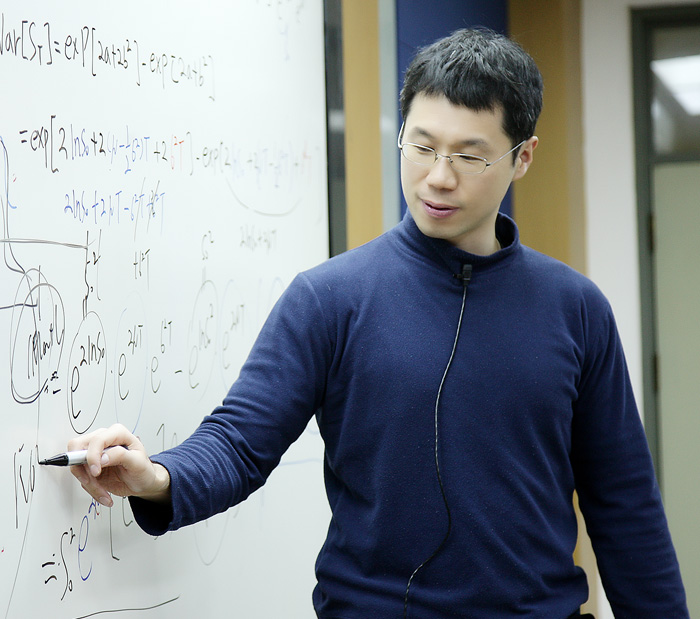Research Stories
Prof. Doojin RYU Suggests a New Framework of Microstructure Studies and Extends Classical Models
Professor Doojin RYU suggests a new framework of microstructure studies and extends classical models in order to reflect various characteristics of intraday transactions and to derive meaningful economic implications.
Economics
Prof.
RYU, DOOJIN
Studies in financial market microstructure examine the intraday price, volume, spread, and volatility dynamics of financial markets and illuminate how the latent demands of market participants are translated into intraday price and trading behaviors. The field of financial market microstructure studies has evolved since the early 90’s. The primitive microstructure models have very simple structures and the earlier microstructure theories do not adequately exploit the rich information provided by the big data of financial markets.
Professor Doojin RYU suggests a new framework of microstructure studies and extends classical models in order to reflect various characteristics of intraday transactions and to derive meaningful economic implications. His first microstructure research provides an extended model to answer the question of who has an information edge in a highly fluid options market. It was published in the Journal of Futures Markets, a reputable finance journal, oriented to derivatives markets (“Informed trading in the index option market: The case of KOSPI 200 options,” Journal of Futures Markets, 2008, 28:12, 1118-1146). After the study, he suggests a cross-market microstructure model, which is new in this field. While existing studies only concentrate on the intraday asset price dynamics in a single market, his new approach considers the order and information flows from related asset markets when inferring the intraday dynamics of a main financial market (“Intraday price formation and bid-ask spread components: A new approach using a cross-market model,” Journal of Futures Markets, 2011, 31:12, 1142-1169).
Recently, Prof. RYU has suggested comprehensive microstructure models to capture all aspects of microstructure information. The studies are “Considering all microstructure effects: The extension of a trade indicator model, Economics Letters, 2016, 146, 107-110” and “Trade duration, informed trading, and option moneyness, International Review of Economics and Finance, 2016, 44, 395-411”. He also analyzes how the violations of intraday option price monotonicity are related to investor characteristics and other microstructure noises. This study was recently published in the Journal of Futures Markets (“Option market characteristics and price monotonicity violations,” Journal of Futures Markets, 2017, 37:5, 473-498).
By analyzing the high-frequency and high-quality information contained in the microstructure dataset of the Korean derivatives markets, he estimates his extended models and suggests important policy and regulatory implications.

